PYHÄVUORI - KOLI OF OSTROBOTHNIA
Pyhävuori located in Alajärvi is a wonderful and diverse geological site. It offers great views of Crater Lake Lappajärvi. Pyhävuori is a special and beloved place of locals.
Pyhävuori is a very valuable outcrop and a diverse geological hiking destination with many fascinating places to see. It is a rocky terrain with several cave-like formations. There are also hiking trails in the area, and a magnificent, the most famous viewpoint in the area (148 m above sea level). Pyhävuori is a subject of many folk tales.
There are two parking spaces near Pyhävuori, where you can leave your car. From there you can see the old fireguard tower.
You will actually find yourself on the elevated edge of the crater. The scenery from the top to Europe's largest crater lake is absolutely stunning.

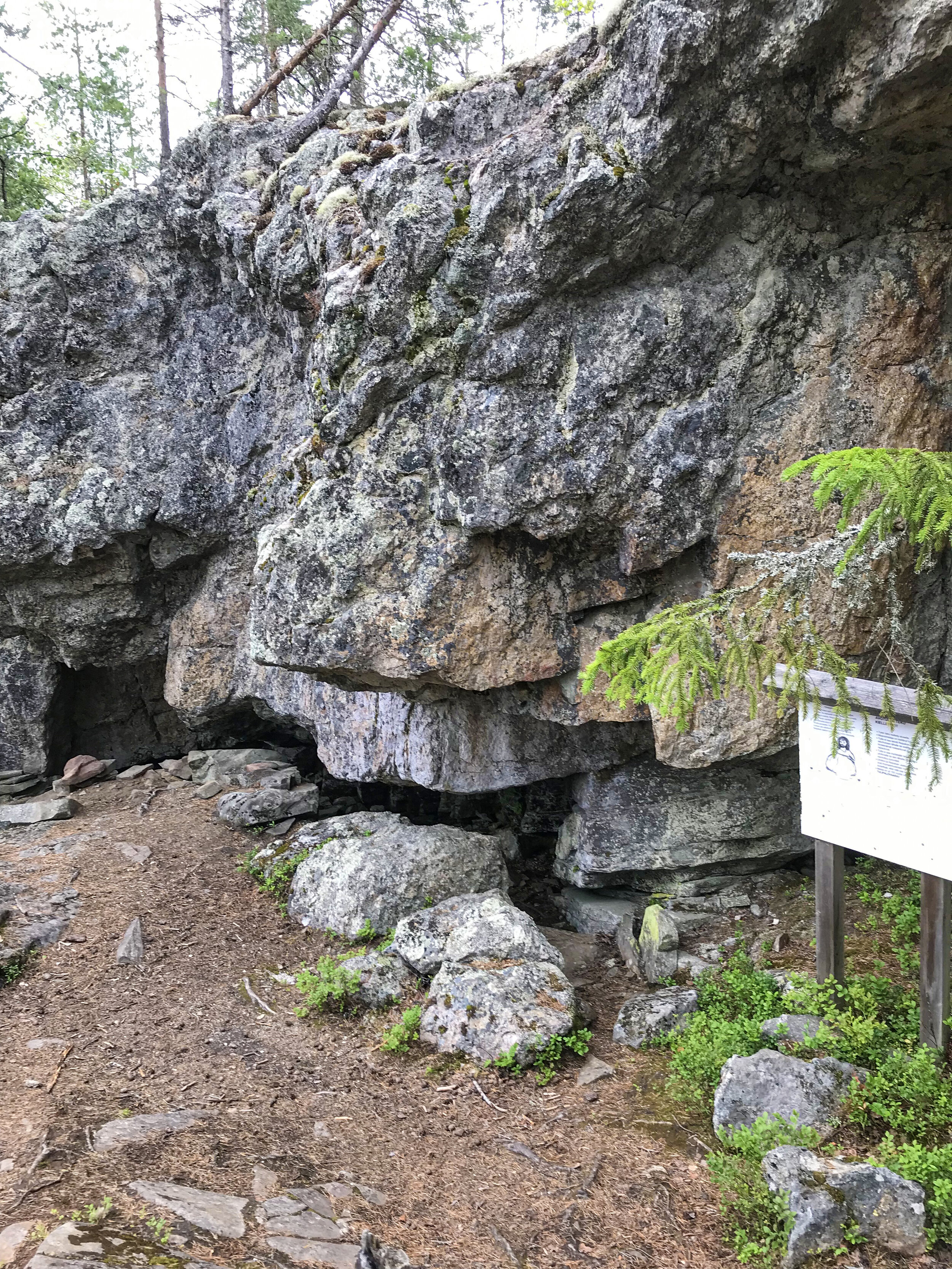
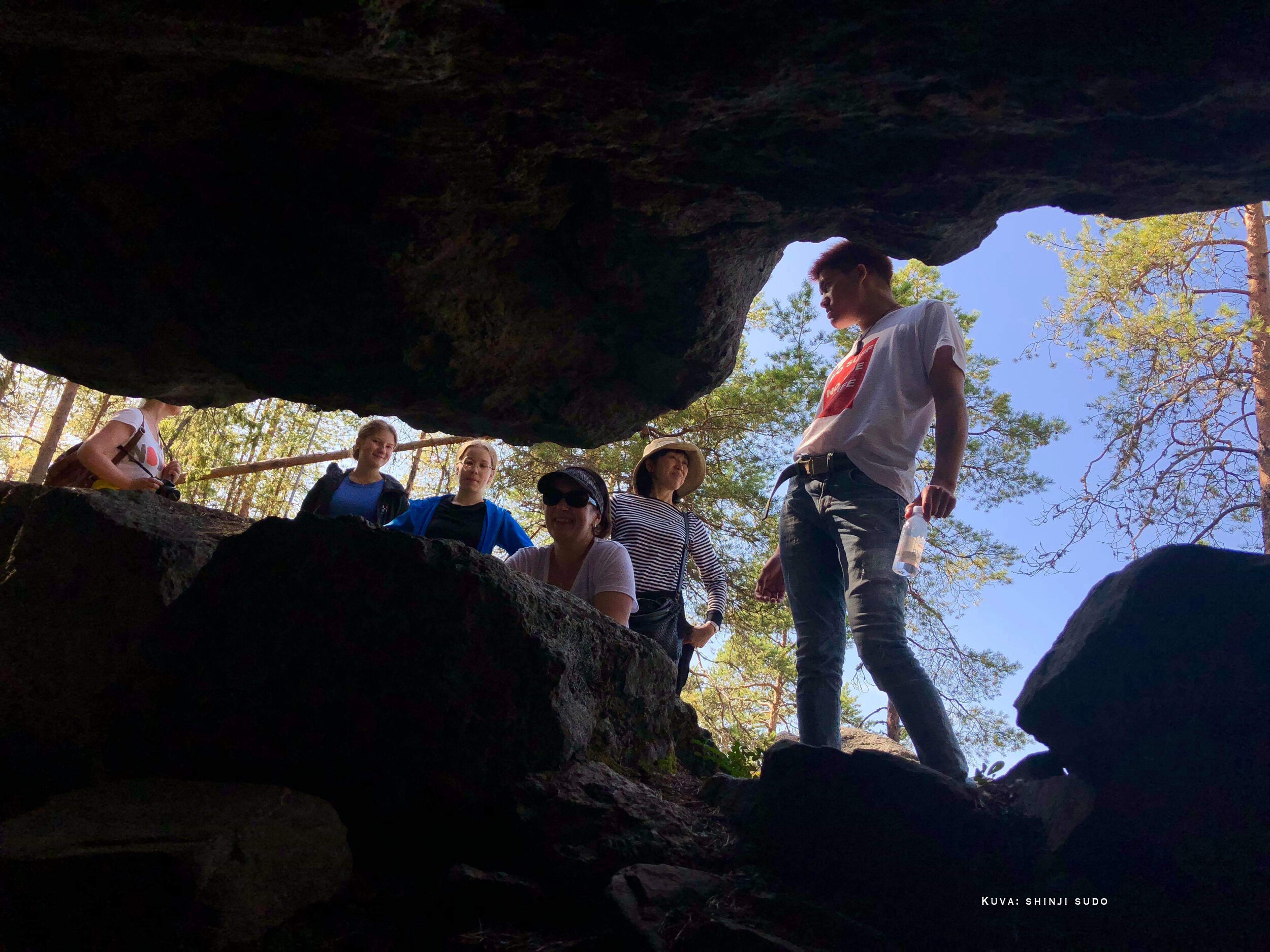
The Pyhävuori area is rich in tales, according to which trolls have once inhabited small caves of Pyhävuori. These caves have been formed in horizontal fractures, particularly mica gneiss and the overlying granite pegmatite. The most famous of the caves is the Pirunpesä (Devil’s Nest), which is more than 16 meters long and known for many stories, according to which it served as sauna for the recluse Jaakko Reipakka (1855–1932).
Remains of his hut are still there — a rectangular-shaped, stone structure where Reipakka spent his summers. You can read more about him from the board placed next to it.
Possible rock paintings from the Stone Age have been discovered on a back wall of the hut, but their authenticity has not been proven. If the rock paintings are authentic, they would substantially enlarge the area of Finnish rock paintings.
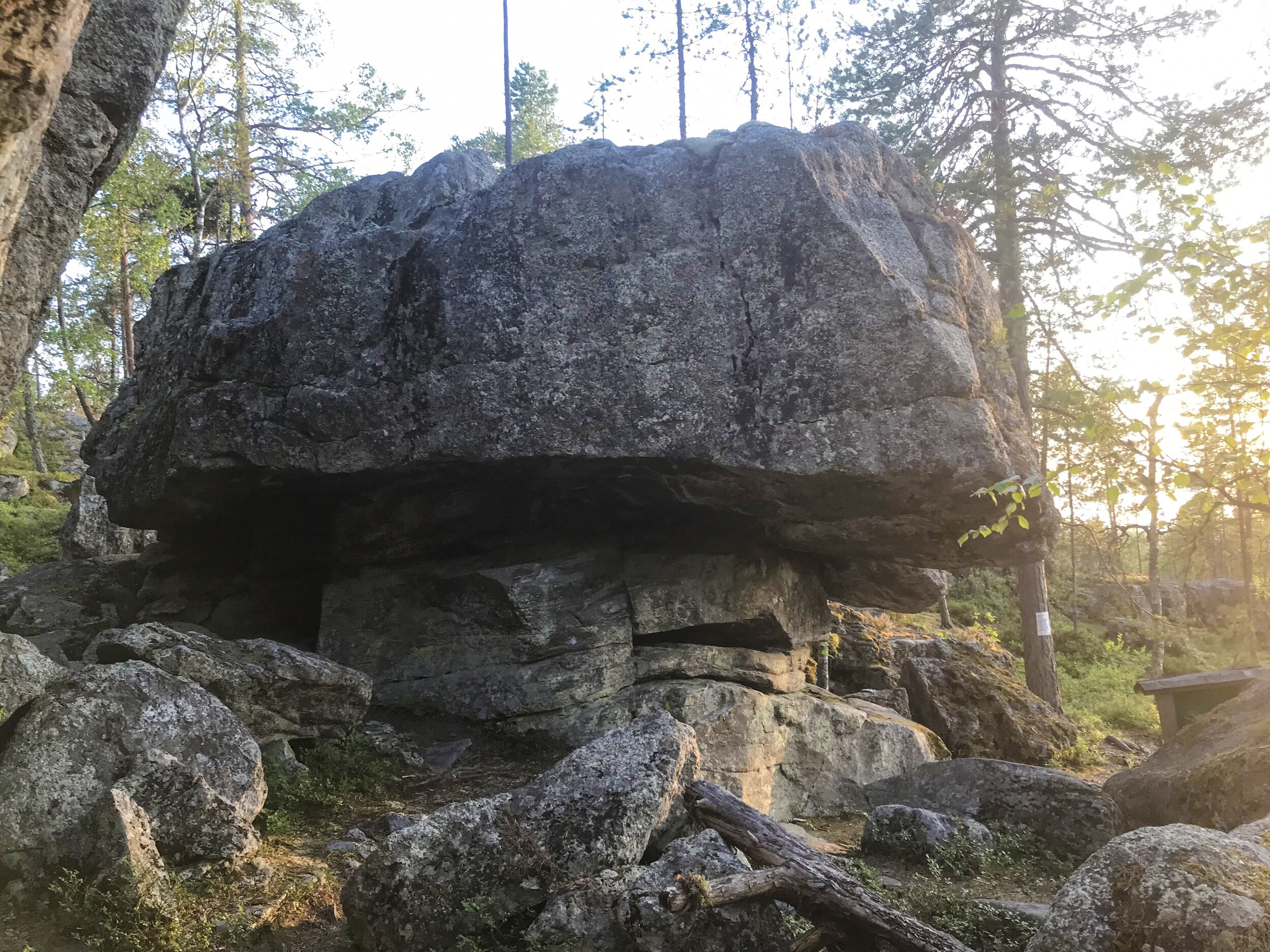
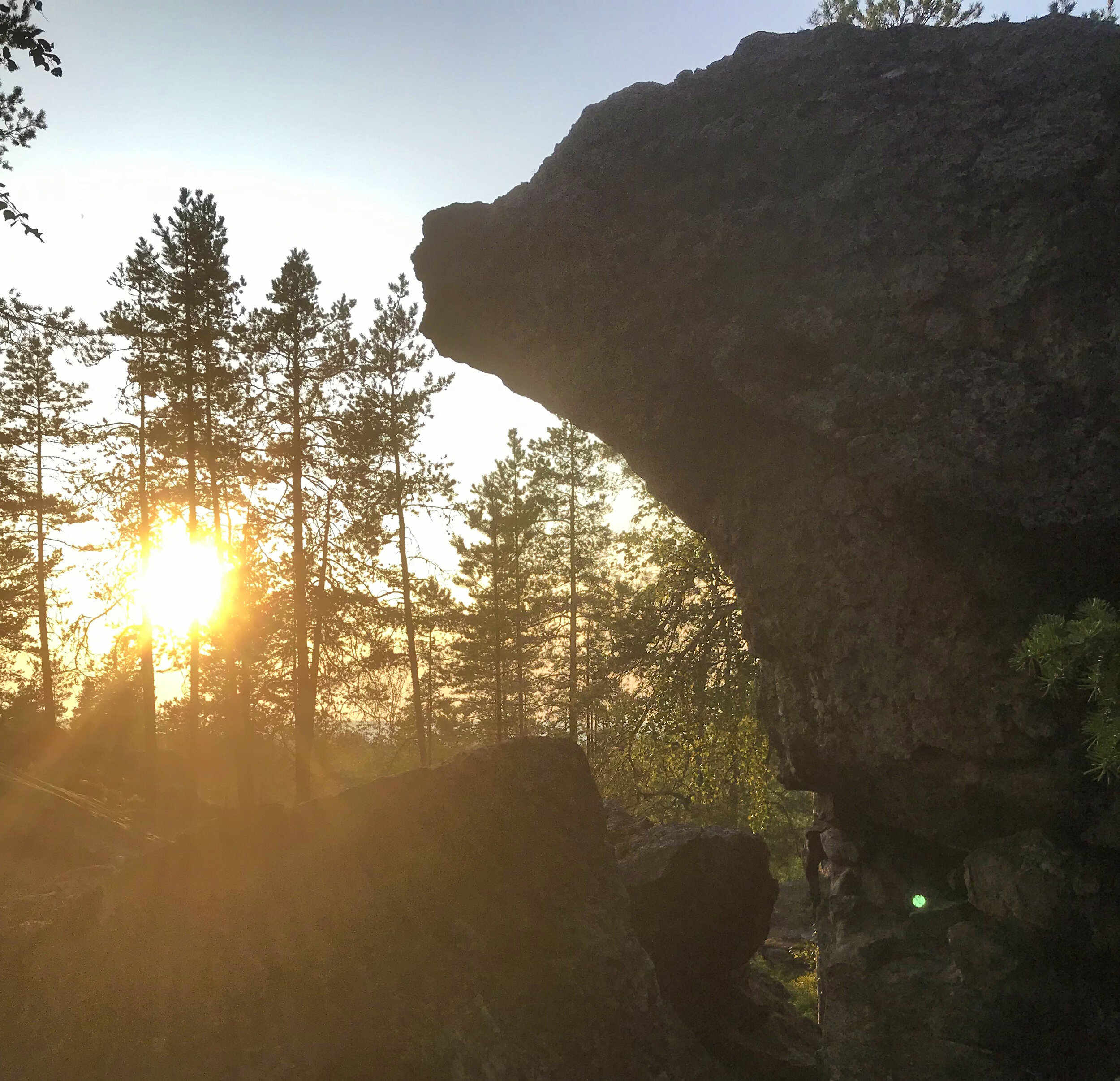
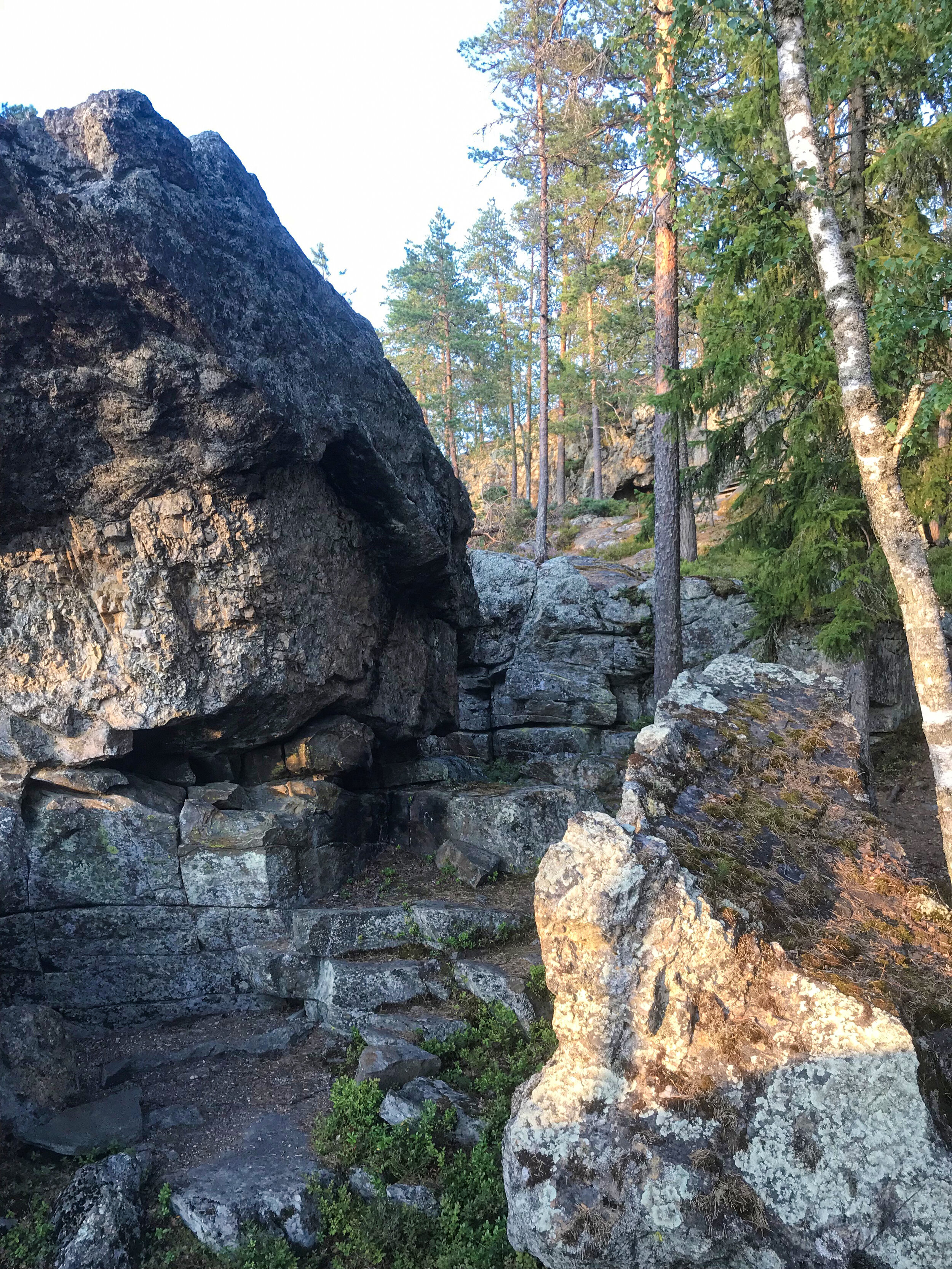

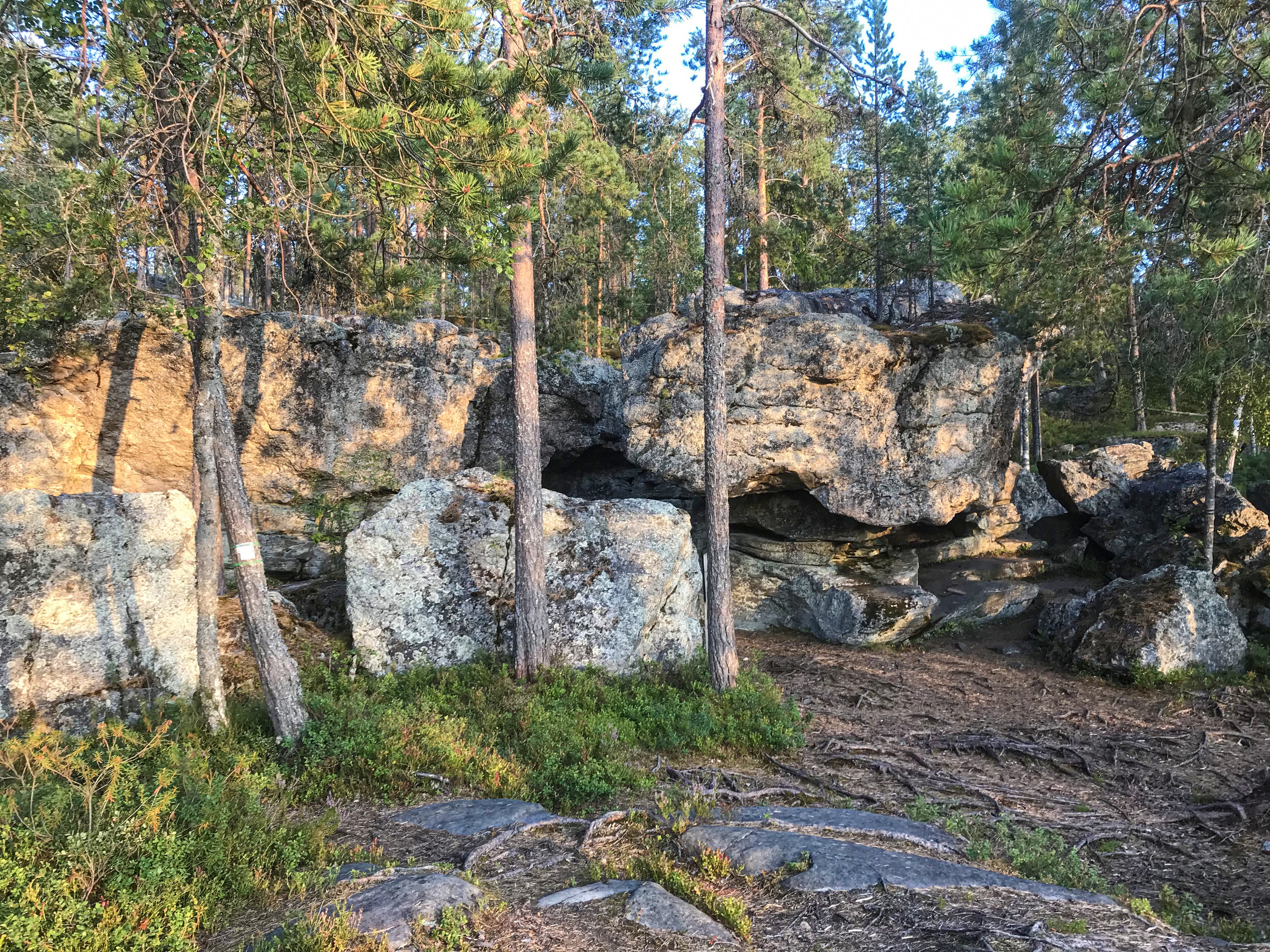
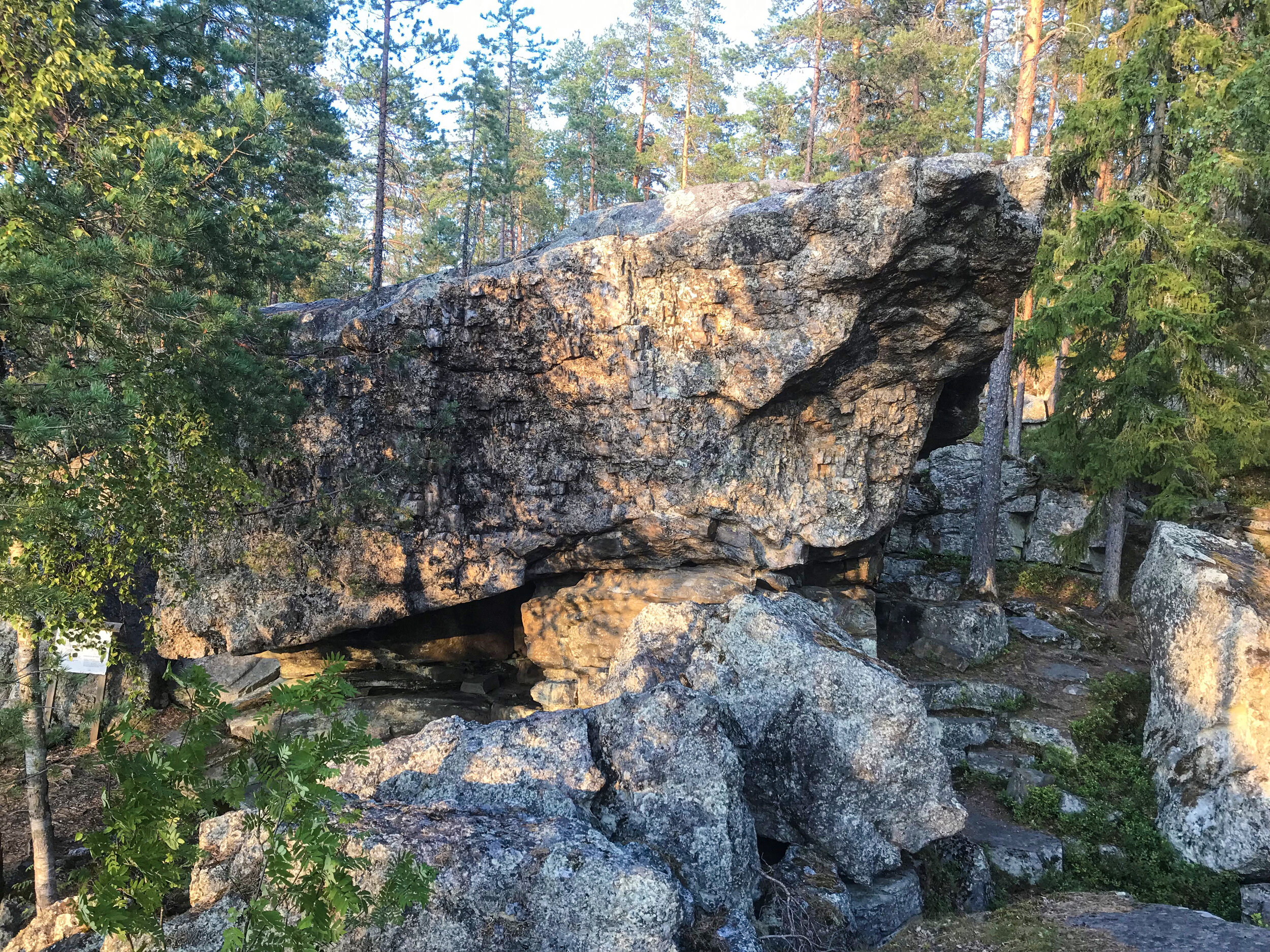
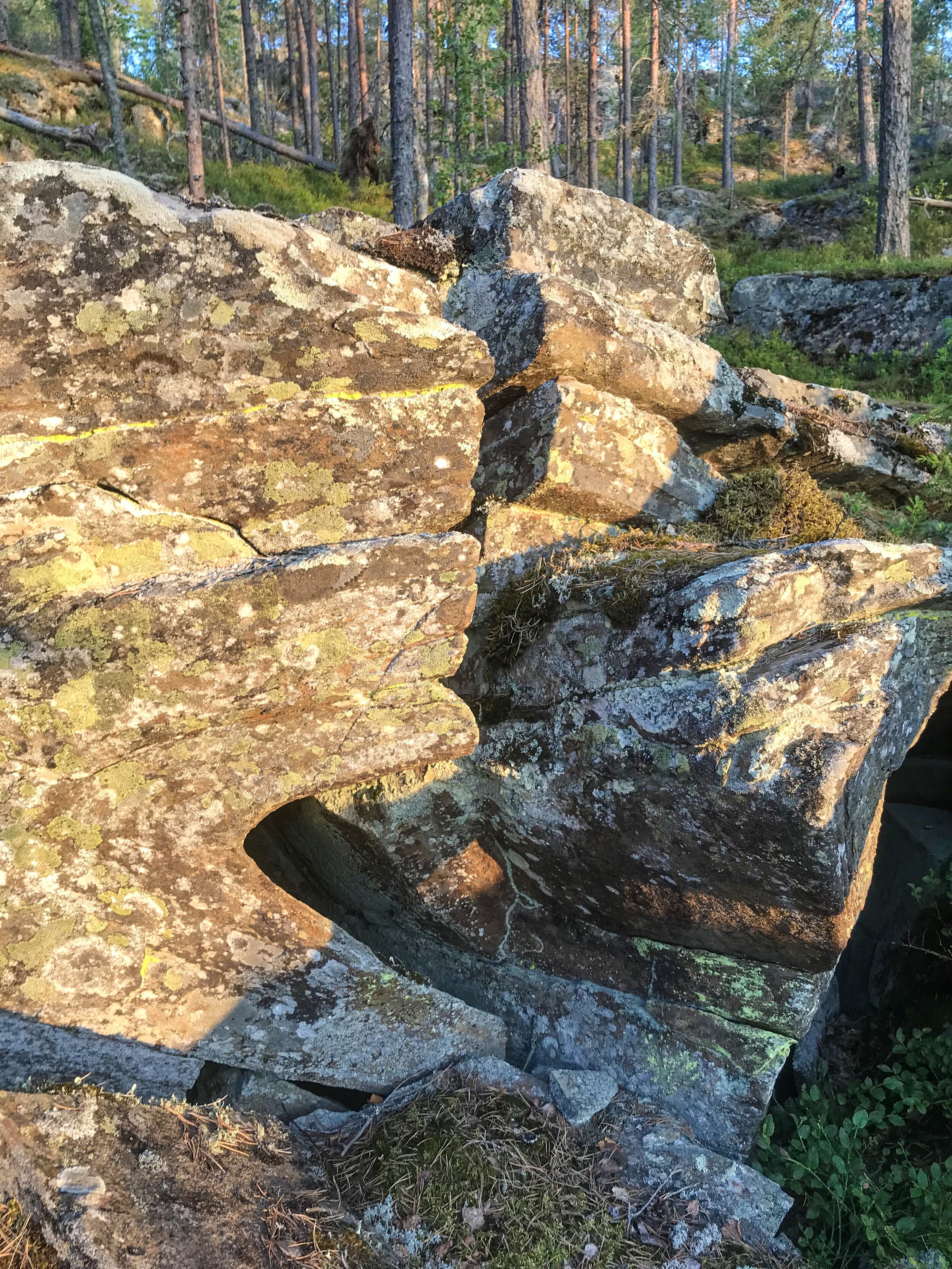
There is also the Sacrificial Stone in Pyhävuori, where ancient people sacrificed children of the rival tribes. Pyhävuori Uhrikivi is a sea stack created by the coastal forces, which developed during the ancient Ancylus Lake stage 10,000–9,000 years ago. It is about 4-5m high, 7-8m wide and shaped like a mushroom. Its cap is granite pegmatite and the stalk is mica gneiss. Mica gneiss erodes easier than pegmatite, resulting in the mushroom shape. It is also locally known as Siankärsäkivi.
Next to the sacrificial stone (about 5 meters to the south) there is a rare-looking fold. Normally, the stone does not bend, however over millions of years deep in the bowels of the Svecofennian Mountain chain (about 1,900 millions years ago) at high pressure and temperature, the stone behaved plastically. The folded mica gneiss boulder about 2 m in diameter is an example of that.
You can experience many time periods in Pyhävuori . It is the best place for meditation and empowerment. Perhaps this is why it is a dear and important place for the locals.
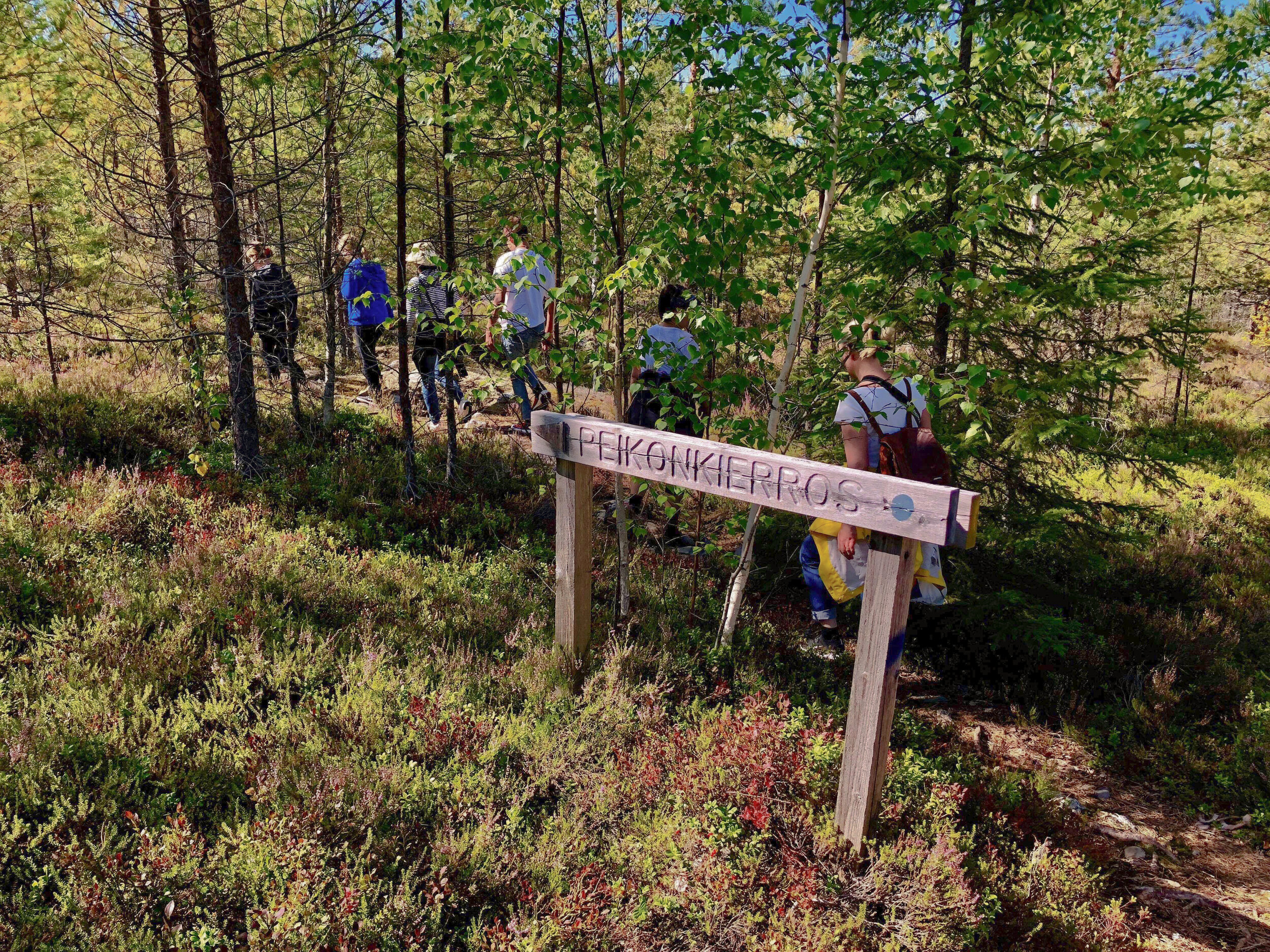

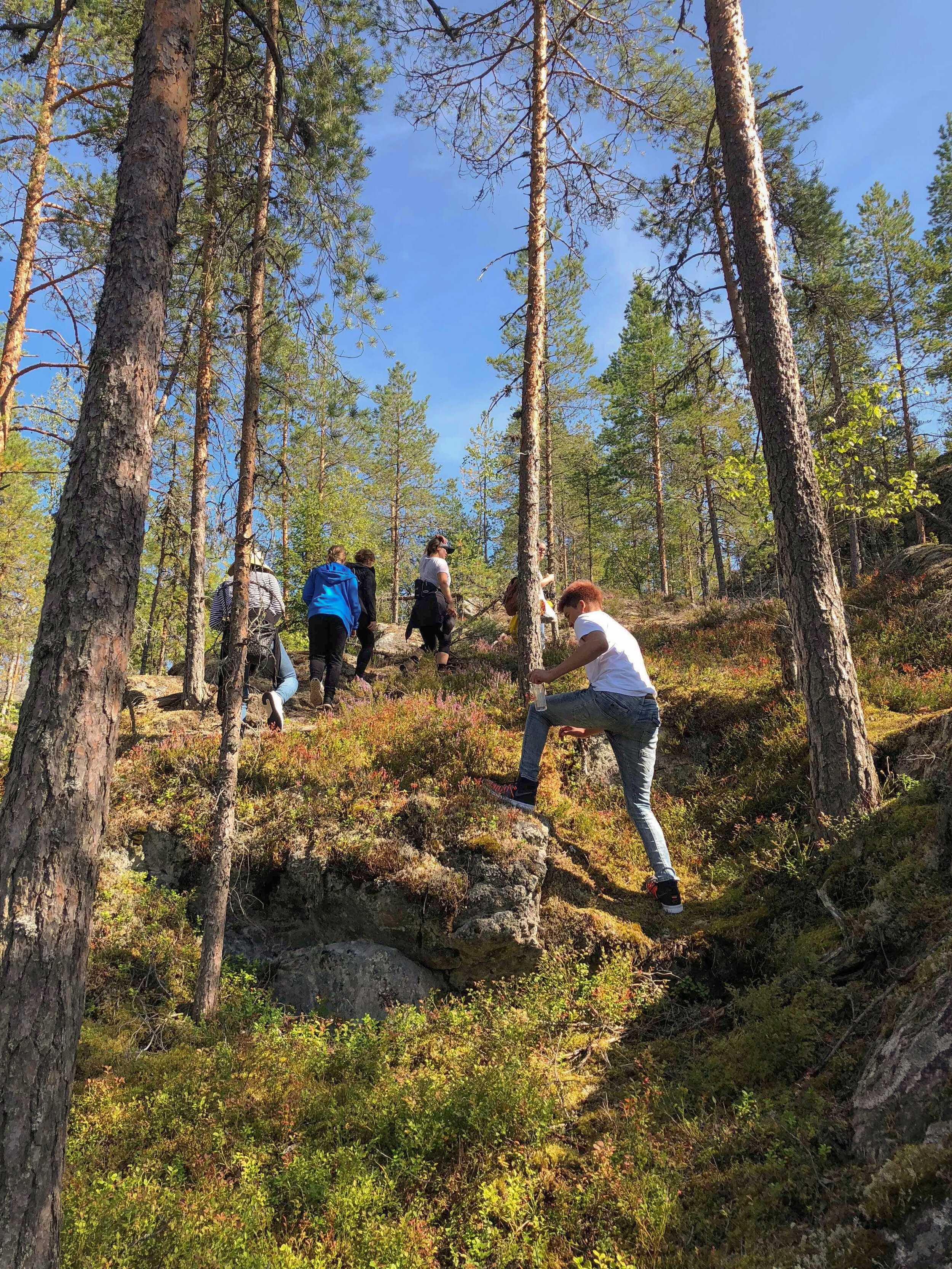
The trails are easy to follow, as they are marked with colored dots. There is also approximately 6.7 km long hiking trail from Pyhävuori to Lakeaharju with two lean-tos on the way. The trail crosses a remarkably beautiful steep-sided Kellaripuro gully, which was formed by stream erosion.
More information: Craterlake Geotrail, destination 12
Location: Google Maps -link
Fire in the Pyhävuori area is forbidden!



